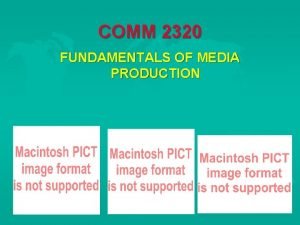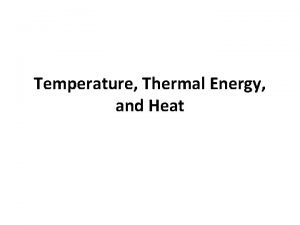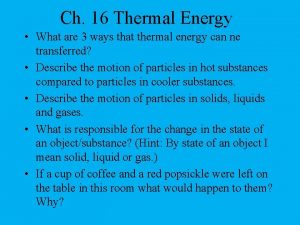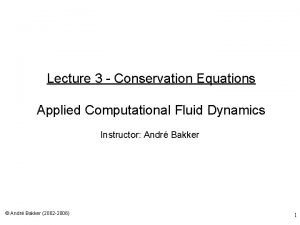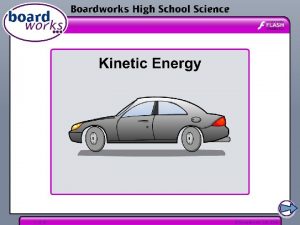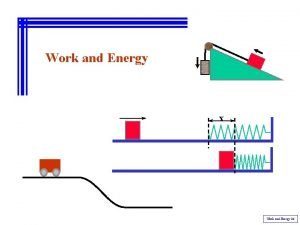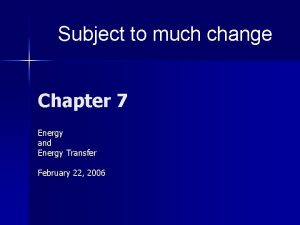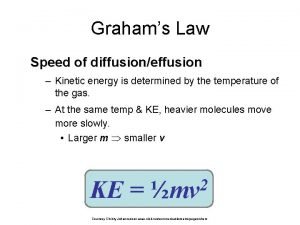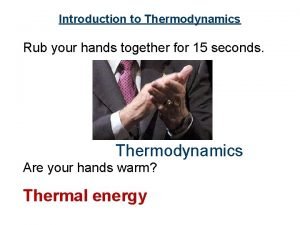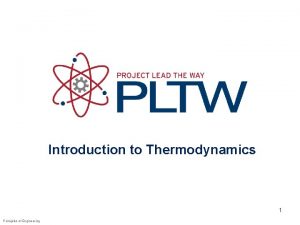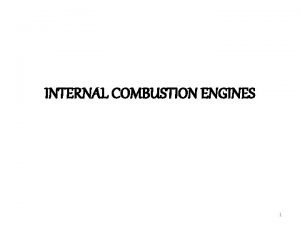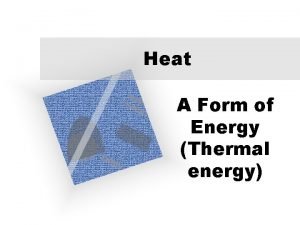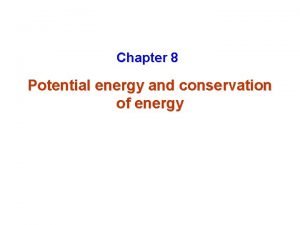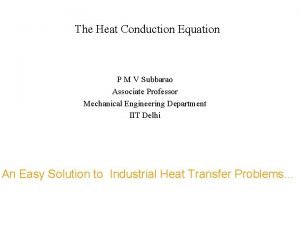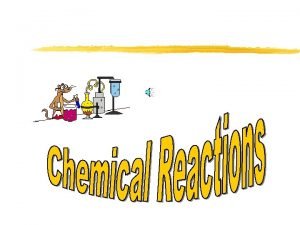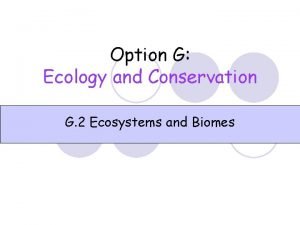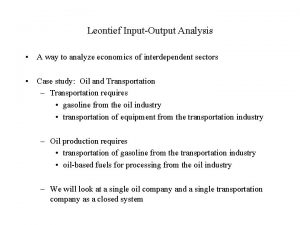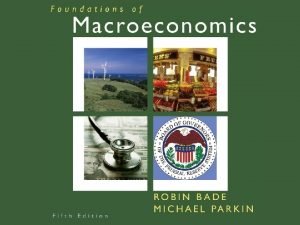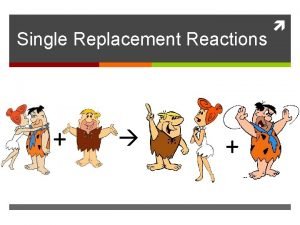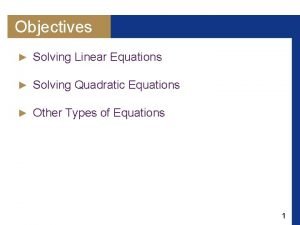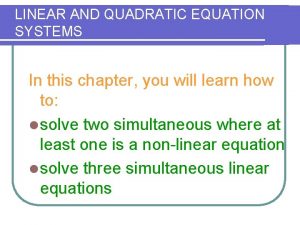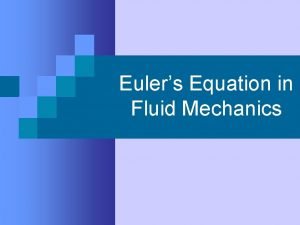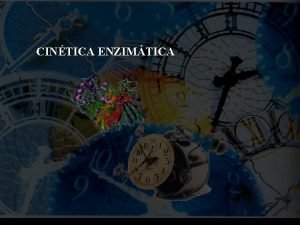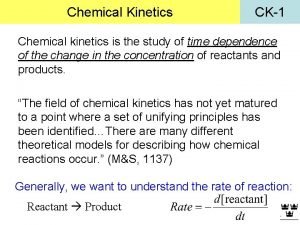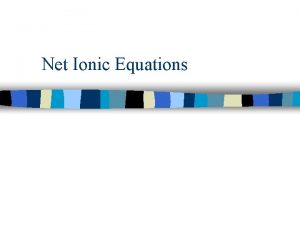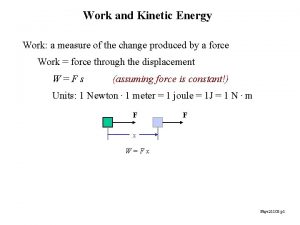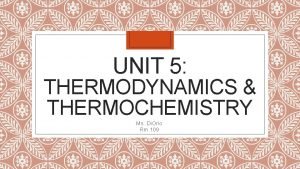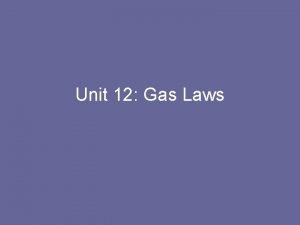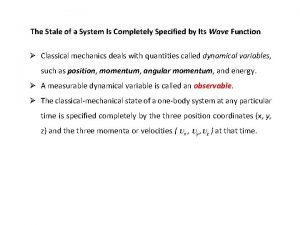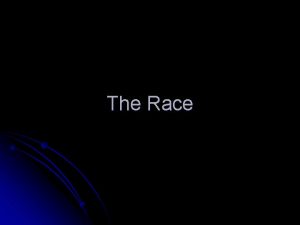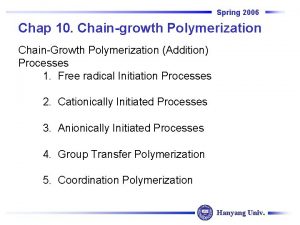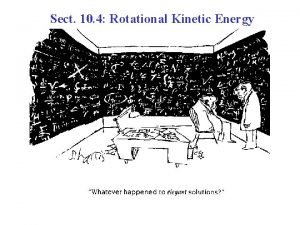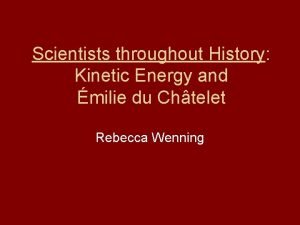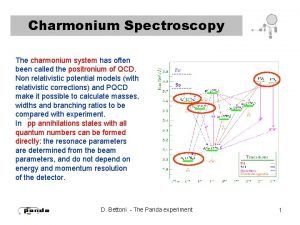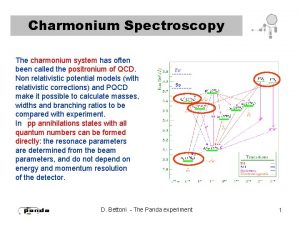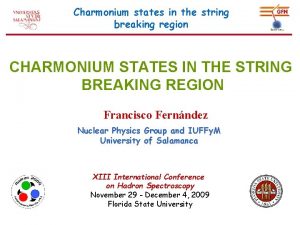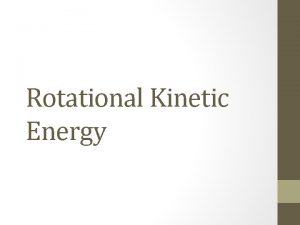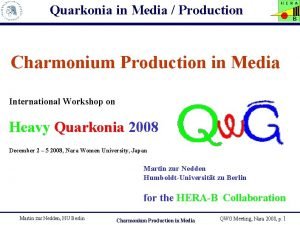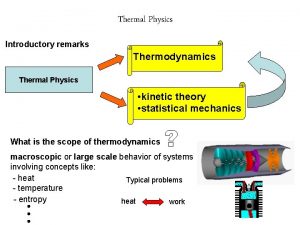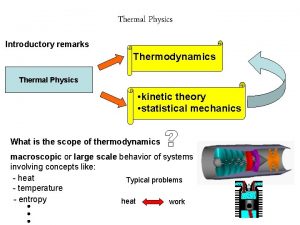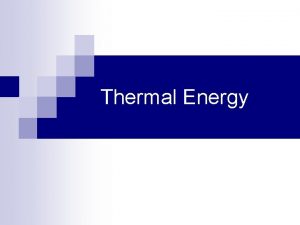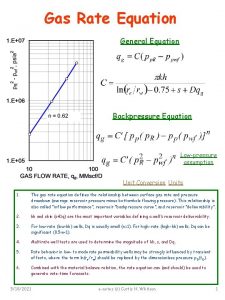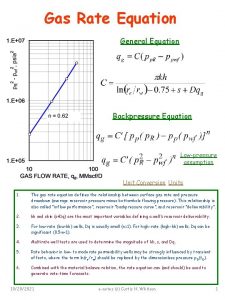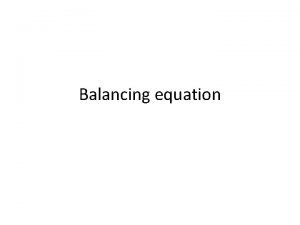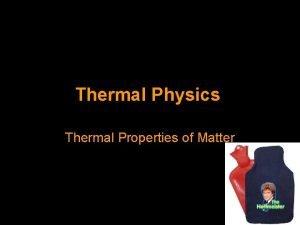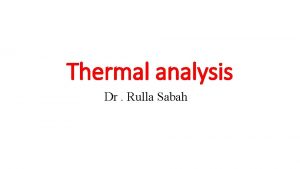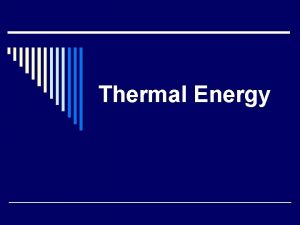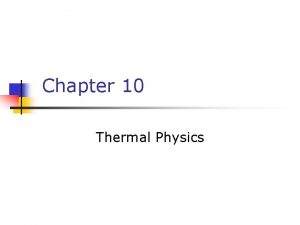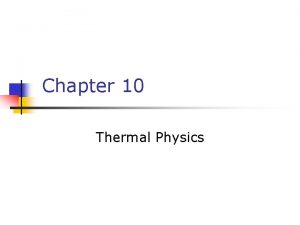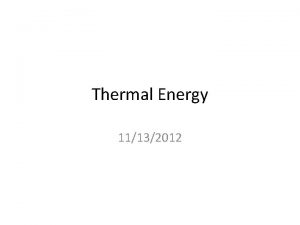Thermal Kinetic Equation Approach to Charmonium Production in















![Correlators and Spectral Functions weak binding strong binding [Petreczky et al. ‘ 07] • Correlators and Spectral Functions weak binding strong binding [Petreczky et al. ‘ 07] •](https://slidetodoc.com/presentation_image_h2/d96cc23fb36252ae48f23a0312b91a1e/image-16.jpg)










![Pt Dependence at RHIC Mid-Rapidity V=U see also [Y. Liu et al. ‘ 09] Pt Dependence at RHIC Mid-Rapidity V=U see also [Y. Liu et al. ‘ 09]](https://slidetodoc.com/presentation_image_h2/d96cc23fb36252ae48f23a0312b91a1e/image-27.jpg)























![Rate-Equation for Reg. Component • (Integrate over Ψ phase space) [Grandchamp, Rapp ‘ 04] Rate-Equation for Reg. Component • (Integrate over Ψ phase space) [Grandchamp, Rapp ‘ 04]](https://slidetodoc.com/presentation_image_h2/d96cc23fb36252ae48f23a0312b91a1e/image-51.jpg)




- Slides: 55

Thermal Kinetic Equation Approach to Charmonium Production in Heavy-Ion Collision Xingbo Zhao with Ralf Rapp Department of Physics and Astronomy Iowa State University Ames, USA Brookhaven National Lab, Upton, NY, Jun. 14 th 2011

Outline Thermal rate-equation approach § • • • Dissociation rate in quasi-free approximation Regeneration rate from detailed balance Connection with lattice QCD Numerical results compared to exp. data § • • • Collision energy dependence (SPS->RHIC->LHC) Transverse momentum dependence (RHIC) Rapidity dependence (RHIC) 2

Motivation: Probe for Deconfinement • Charmonium (Ψ): a probe for deconfinement – Color-Debye screening reduces binding energy -> Ψ dissolve [Matsui and Satz. ‘ 86] • Reduced yield expected in AA collisions relative to superposition of individual NN collisions • Other factors may also suppress Ψ yield in AA collision - Quantitative calculation is needed 3

Motivation: Eq. Properties Heavy-Ion Coll. • Equilibrium properties obtained from lattice QCD ? – free energy between two static quarks ( heavy quark potential) ? – Ψ current-current correlator ( spectral function) • Kinetic approach needed to translate static Ψ eq. properties into production in the dynamically evolving hot and dense medium 4

Picture of Ψ production in Heavy-Ion Coll. • 3 stages: 1 ->2 ->3 1. Initial production in hard collisions 2. Pre-equilibrium stage (CNM effects) 3. Thermalized medium • 2 processes in thermal medium: 1. Dissociation by screening & collision 2. Regeneration from coalescence D J/ψ -c c • Fireball life is too short for equilibration D J/ψ - Kinetic approach needed for off-equilibrium system 5

Thermal Rate-Equation • Thermal rate-equation is employed to describe production in thermal medium (stage 3) – Loss term for dissociation Gain term for regeneration – Γ: dissociation rate Nψeq: eq. limit of Ψ – Detailed balance is satisfied by sharing common Γ in the loss and gain term – Main microscopic inputs: Γ and Nψeq 6

Link between Lattice QCD and Exp. Data Experimental observables Kinetic equations Initial conditions diss. & reg. rate: Γ εBΨ l. QCD potential Ψ eq. limit: NΨeq mΨ, mc l. QCD correlator 7

Link between Lattice QCD and Exp. Data Experimental observables Kinetic equations Initial conditions diss. & reg. rate: Γ εBΨ l. QCD potential Ψ eq. limit: NΨeq mΨ, mc l. QCD correlator 8

In-medium Dissociation Mechanisms • Dissociation rate: • Dissociation cross section σiΨ - gluo-dissociation: g+Ψ→c+ VS. quasifree dissociation: g(q)+Ψ→c+ +g(q) [Bhanot and Peskin ‘ 79] [Grandchamp and Rapp ‘ 01] • Gluo-dissociation is not applicable for reduced εBΨ<T quasifree diss. becomes dominant suppression mechanism - strong coupling αs~ 0. 3 is a parameter of the approach 9

Link between Lattice QCD and Exp. Data Experimental observables Kinetic equations Initial conditions diss. & reg. rate: Γ εBΨ l. QCD potential Ψ eq. limit: NΨeq mΨ, mc l. QCD correlator 10

Charmonium In-Medium Binding • • Potential model employed to evaluate [Cabrera et al. ’ 07, Riek et al. ‘ 10] [Petreczky et al ‘ 10] • V(r)=U(r) vs. F(r)? (F=U-TS) • 2 “extreme” cases: • V=U: strong binding • V=F: weak binding [Riek et al. ‘ 10] 11

T and p Dependence of Quasifree Rate • • • Gluo-dissociation is inefficient even in the strong binding scenario (V=U) Quasifree rate increases with both temperature and ψ momentum Dependence on both is more pronounced in the strong binding scenario 12

Link between Lattice QCD and Exp. Data Experimental observables Kinetic equations Initial conditions diss. & reg. rate: Γ εBΨ l. QCD potential Ψ eq. limit: NΨeq mΨ, mc l. QCD correlator 13

Link between Lattice QCD and Exp. Data Experimental observables Kinetic equations Initial conditions diss. & reg. rate: Γ εBΨ l. QCD potential Ψ eq. limit: NΨeq mΨ, mc l. QCD correlator 14

Model Spectral Functions pole mass mΨ threshold 2 mc* • Model spectral function = resonance + continuum width Γ • In vacuum: Ψ • At finite temperature: quasifree diss. rate • Z(T) reflects medium induced change of resonance strength • Z(T) is constrained from matching l. QCD correlator ratio Z(Tdiss)=0 Tdiss=2. 0 Tc V=U Tdiss=1. 25 Tc V=F • Regeneration is possible only if T<Tdiss 15
![Correlators and Spectral Functions weak binding strong binding Petreczky et al 07 Correlators and Spectral Functions weak binding strong binding [Petreczky et al. ‘ 07] •](https://slidetodoc.com/presentation_image_h2/d96cc23fb36252ae48f23a0312b91a1e/image-16.jpg)
Correlators and Spectral Functions weak binding strong binding [Petreczky et al. ‘ 07] • Peak structure in spectral function dissolves at Tdiss • Model correlator ratios are compatible with l. QCD results 16

Link between Lattice QCD and Exp. Data Experimental observables Kinetic equations Initial conditions diss. & reg. rate: Γ εBΨ l. QCD potential Ψ eq. limit: NΨeq mΨ, mc l. QCD correlator 17

Regeneration: Inverse Dissociation • Gain term dictated by detailed balance: • For thermal c spectra, NΨeq follows from statistical model [Braun-Munzinger et al. ’ 00, Gorenstein et al. ‘ 01] - charm quarks distributed over open charm and Ψ states according to their mass and degeneracy - masses for open charm and Ψ are from potential model • Realistic off-kinetic-eq. c spectra lead to weaker regeneration: • Charm relaxation time τceq is our second parameter: τceq~3/6 fm/c 18

Link between Lattice QCD and Exp. Data 1. shadowing 2. nuclear absorption 3. Cronin Experimental observables Kinetic equations Initial conditions diss. & reg. rate: Γ εBΨ l. QCD potential Ψ eq. limit: NΨeq mΨ, mc l. QCD correlator 19

Link between Lattice QCD and Exp. Data 1. shadowing 2. nuclear absorption 3. Cronin Experimental observables Kinetic equations Initial conditions 1. Coll. energy dep. 2. Pt dep. 3. Rapidity dep. diss. & reg. rate: Γ εBΨ l. QCD potential Ψ eq. limit: NΨeq mΨ, mc l. QCD correlator 20

Compare to data from SPS NA 50 strong binding (V=U) incl. J/psi yield weak binding (V=F) • Different composition for different scenarios • Primordial production dominates in strong binding scenario • Significant regeneration in weak binding scenario • Large uncertainty on σcc 21

J/Ψ yield at RHIC strong binding (V=U) incl. J/psi yield weak binding (V=F) • Larger primordial (regeneration) component in V=U (V=F) • Compared to SPS regeneration takes larger fraction in both scenarios • Formation time effect and B meson feeddown are included See also [Thews ‘ 05], [Yan et al. ‘ 06], [Andronic et al. ‘ 07] 22

J/Ψ yield at LHC (w/o Shadowing) weak binding (V=F) strong binding (V=U) • Parameter free prediction – both αs and τceq fixed at SPS and RHIC • Regeneration component dominates except for peripheral collisions • RAA<1 for central collisions (with • Comparable total yield for V=F and V=U , ) 23

With Shadowing Included • Shadowing suppresses both primordial production and regeneration • Regeneration dominant in central collisions even with shadowing • Nearly flat centrality dep. due to interplay between prim. and reg. 24

Compare to Statistical Model weak binding (V=F) strong binding (V=U) • Regeneration is lower than statistical limit: - statistical limit in QGP phase is more relevant for ψ regeneration - statistical limit in QGP is smaller than in hadronic phase - charm quark kinetic off-eq. reduces ψ regeneration - J/ψ is chemically off-equilibrium with cc (small reaction rate)25

High pt Ψ at LHC • • Negligible regeneration for pt > 6. 5 Ge. V Strong suppression for prompt J/Ψ Significant yield from B feeddown Similar yields and composition between V=U and V=F 26
![Pt Dependence at RHIC MidRapidity VU see also Y Liu et al 09 Pt Dependence at RHIC Mid-Rapidity V=U see also [Y. Liu et al. ‘ 09]](https://slidetodoc.com/presentation_image_h2/d96cc23fb36252ae48f23a0312b91a1e/image-27.jpg)
Pt Dependence at RHIC Mid-Rapidity V=U see also [Y. Liu et al. ‘ 09] • Primordial production dominant at pt>5 Ge. V • Regeneration concentrated at low pt due to c quark thermalization • Formation time effect and B feeddown increase high pt production 27 [Gavin and Vogt ‘ 90, Blaizot and Ollitrault ‘ 88, Karsch and Petronzio ‘ 88]

RAA(p. T) at RHIC Mid-Rapidity V=F • At low pt regeneration component is larger than V=U 28

J/ψ v 2(p. T) at RHIC strong weak binding(V=F) (V=U) • Small v 2(p. T) for entire p. T range - At low pt v 2 from thermal coalescence is small - At high pt regeneration component is gone • Even smaller v 2 even in V=F - Small v 2 does not exclude coalescence component 29

J/Ψ Yield at RHIC Forward Rapidity strong binding (V=U) incl. J/psi yield weak binding (V=F) • Hot medium induced suppression and reg. comparable to mid-y • Stronger CNM induced suppression leads to smaller RAA than mid-y • Larger uncertainty on CNM effects at forward-y See also [Thews ‘ 05], [Yan et al. ‘ 06], [Andronic et al. ‘ 07] 30

RAA(p. T) at RHIC Forward Rapidity V=U • Shadowing pronounced at low pt & fade away at high pt • Large uncertainty on CNM effects 31

RAA(p. T) at RHIC Forward Rapidity V=F • At low pt reg. component is larger than V=U (similar to mid-y) 32

Summary and Outlook • A thermal rate-equation approach is employed to describe charmonium production in heavy-ion collisions • Dissociation and regeneration rates are compatible with lattice QCD results • J/ψ inclusive yield consistent with experimental data from collision energy over more than two orders of magnitude • Primordial production (regenration) dominant at SPS (LHC) • RAA<1 at LHC (despite dominance of regeneration) due to incomplete thermalization (unless the charm cross section is really large) • Calculate Ψ regeneration from realistic time-dependent charm phase space distribution from e. g. , Langevin simulations 33 33

Thank you! based on X. Zhao and R. Rapp Phys. Lett. B 664, 253 (2008) X. Zhao and R. Rapp Phys. Rev. C 82, 064905 (2010) X. Zhao and R. Rapp Nucl. Phys. A 859, 114 (2011) 34

Compare to data from SPS NA 50 strong binding (V=U) trans. momentum incl. J/psi yield weak binding (V=F) • primordial production dominates in strong binding scenario 35

J/ψ v 2(p. T) at RHIC strong binding (V=U) • Small v 2(p. T) for entire p. T range 36

Explicit Calculation of Regeneration Rate • in previous treatment, regeneration rate was evaluated using detailed balance was evaluated using statistical model assuming thermal charm quark distribution • thermal charm quark distribution is not realistic even at RHIC ( ) [van Hees et al. ’ 08, Riek et al. ‘ 10] • need to calculate regeneration rate explicitly from non-thermal charm distribution • 37

3 -to-2 to 2 -to-2 Reduction • g(q)+Ψ dissociation: diss. reg. c+c+g(q) regeneration: • reduction of transition matrix according to detailed balance 38

Thermal vs. p. QCD Charm Spectra • regeneration from two types of charm spectra are evaluated: 1) thermal spectra: 2) p. QCD spectra: [van Hees ‘ 05] 39

Reg. Rates from Different c Spectra See also, [Greco et al. ’ 03, Yan et al ‘ 06] • thermal : p. QCD+thermal = 1 : 0. 28 : 0. 47 • strongest reg. from thermal spectra (larger phase space overlap) • introducing c and angular correlation decrease reg. for high pt Ψ 40

Ψ Regeneration from Different c Spectra • strongest regeneration from thermal charm spectra • p. QCD spectra lead to larger <pt 2> of regenerated Ψ • c angular correlation lead to small reg. and low <pt 2> • blastwave overestimates <pt 2> from thermal charm spectra 41

J/Ψ yield and <pt 2> at RHIC forward y V=U trans. momentum incl. J/psi yield V=F • larger fraction for reg. Ψ in weak binding scenario • strong binding tends to reproduce <pt 2> data 42 42

J/Ψ suppression at forward vs mid-y • • comparable hot medium effects stronger suppression at forward rapidity due to CNM effects 43 43

RAA(p. T) at RHIC V=F V=U • Primordial component dominates at high pt (>5 Ge. V) • Significant regeneration component at low pt • Formation time effect and B-feeddown enhance high pt J/Ψ [Gavin and Vogt ‘ 90, Blaizot and Ollitrault ‘ 88, Karsch and Petronzio ‘ 88] • See also [Y. Liu et al. ‘ 09] 44

J/Ψ Abundance vs. Time at RHIC V=F V=U • Dissoc. and Reg. mostly occur at QGP and mix phase • “Dip” structure for the weak binding scenario 45 45

J/Ψ Abundance vs. Time at LHC V=F V=U • regeneration is below statistical equilibrium limit 46 46

Ψ Reg. in Canonical Ensemble • Integer charm pair produced in each event • c and anti-c simultaneously produced in each event, • c and anti-c correlation volume effect further increases local c (anti-c) density 47

Ψ Reg. in Canonical Ensemble • Larger regeneration in canonical ensemble • Canonical ensemble effect is more pronounced for non-central collisions • Correlation volume effect further increases Ψ regeneration 48

Fireball Evolution , {vz, at, az} “consistent” with: • - final light-hadron flow - hydro-dynamical evolution • isentropical expansion with constant Stot (matched to Nch) and s/n. B (inferred from hadro-chemistry) • Eo. S: ideal massive parton gas in QGP, resonance gas in HG [X. Zhao+R. Rapp ‘ 08] 49 49

Primordial and Regeneration Components • Linearity of Boltzmann Eq. allows for decomposition of primordial and regeneration components • For primordial component we directly solve homogeneous Boltzmann Eq. • For regeneration component we solve a Rate Eq. for inclusive yield and estimate its pt spectra using a locally thermal distribution boosted by medium flow. 50
![RateEquation for Reg Component Integrate over Ψ phase space Grandchamp Rapp 04 Rate-Equation for Reg. Component • (Integrate over Ψ phase space) [Grandchamp, Rapp ‘ 04]](https://slidetodoc.com/presentation_image_h2/d96cc23fb36252ae48f23a0312b91a1e/image-51.jpg)
Rate-Equation for Reg. Component • (Integrate over Ψ phase space) [Grandchamp, Rapp ‘ 04] • For thermal c spectra, Neq follows from charm conservation: • Non-thermal c spectra lead [Braun-Munzinger et al. ’ 00, Gorenstein et al. ‘ 01] [Greco et al. ’ 03] to less regeneration: typical [van Hees et al. ’ 08, Riek et al. ‘ 10] 51

Initial Condition and RAA is obtained from Ψ primordial production • assuming • follows from Glauber model with shadowing and nuclear absorption parameterized with an effective σabs • follows from Ψ spectra in pp collisions with Cronin effect applied • nuclear modification factor: Ncoll: Number of binary nucleon-nucleon collisions in AA collisions RAA=1, if without either cold nuclear matter (shadowing, nuclear absorption, Cronin) or hot medium effects 52

Correlators and Spectral Functions • two-point charmonium current correlation function: • charmonium spectral function: pole mass mΨ(T), width Ψ(T) • threshold 2 mc*(T), lattice QCD suggests correlator ratio ~1 up to 2 -3 Tc: [Aarts et al. ’ 07, Datta te al ’ 04, Jakovac et al ‘ 07] 53

Initial Conditions • cold nuclear matter effects included in initial conditions • nuclear shadowing: • nuclear absorption: • Cronin effect: • implementation for cold nuclear matter effects: • nuclear shadowing Glauber model with σabs from p(d)-A data • nuclear absorption • Cronin effect Gaussian smearing with smearing width guided by p(d)-A data 54

Link between Lattice QCD and Exp. Data l. QCD potential l. QCD correlator Initial conditions (Binding energy) diss. & reg. rates Kinetic equations Experimental observables 55
 Minecraft charmonium
Minecraft charmonium Post production
Post production Thermal kinetic energy
Thermal kinetic energy What is convection
What is convection Mass and thermal energy
Mass and thermal energy Thermal energy section 3
Thermal energy section 3 Thermal transfer vs direct thermal printing
Thermal transfer vs direct thermal printing Derive the equation of kinetic energy
Derive the equation of kinetic energy Kinetic energy equation rearranged for velocity
Kinetic energy equation rearranged for velocity Kinetic formula
Kinetic formula Equation for kinetic energy
Equation for kinetic energy What is gravitational potential energy
What is gravitational potential energy Kinetic energy gravitational
Kinetic energy gravitational Graham's law equation
Graham's law equation What is specific heat capacity
What is specific heat capacity Thermal energy formula
Thermal energy formula Mean effective pressure in ic engine
Mean effective pressure in ic engine Energy thermal formula
Energy thermal formula Potential energy
Potential energy Thermal wind equation
Thermal wind equation Heat tr
Heat tr Phosphorus oxygen
Phosphorus oxygen Production approach adalah
Production approach adalah Difference between virtual circuit and datagram network
Difference between virtual circuit and datagram network Cognitive approach vs behavioral approach
Cognitive approach vs behavioral approach Waterfall vs shower approach
Waterfall vs shower approach Multi approach avoidance conflict
Multi approach avoidance conflict Cognitive approach vs behavioral approach
Cognitive approach vs behavioral approach What is research
What is research Traditional approach to system development
Traditional approach to system development Deep learning approach and surface learning approach
Deep learning approach and surface learning approach Net production of consumers equation
Net production of consumers equation Leontief production equation calculator
Leontief production equation calculator Statistical discrepancy
Statistical discrepancy Single replacement reaction
Single replacement reaction Eyring equation and arrhenius equation
Eyring equation and arrhenius equation Linear equation and quadratic equation
Linear equation and quadratic equation Linear combinations method
Linear combinations method Euler's equation fluids
Euler's equation fluids How to solve linear ode
How to solve linear ode Eyring equation
Eyring equation Rate law units
Rate law units What's an ionic equation
What's an ionic equation Acceleration kinetic energy
Acceleration kinetic energy Ads=vdv example
Ads=vdv example Kinetic letters animal positions
Kinetic letters animal positions Thermodynamic vs kinetic control
Thermodynamic vs kinetic control Relation between pressure and kinetic energy of gas
Relation between pressure and kinetic energy of gas Kinetic energy operator
Kinetic energy operator Translational kinetic energy
Translational kinetic energy Dynamic postural assessment: pulling
Dynamic postural assessment: pulling Kinetic chain reaction
Kinetic chain reaction Chapter 14 solids liquids and gases
Chapter 14 solids liquids and gases Kinetic friction definition
Kinetic friction definition Moment of inertia chart
Moment of inertia chart History of kinetic energy
History of kinetic energy
